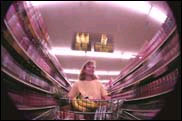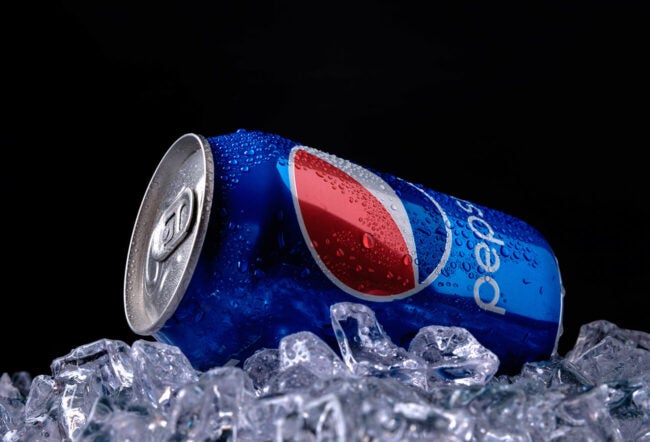Consider the life of a traveling salesman: always on the move, a different client every day, trying to stay on schedule. Is there a retailing lesson to be learned from that experience?
Wharton marketing researchers believe there is. They use a concept known as the “Traveling Salesman Problem” to study the behavior of grocery shoppers. The TSP, as it’s called in operations research, involves solving a fundamental question: If a salesman has to visit a number of cities, what is the shortest route he can take to cover all his stops and then return home?
Grocery shoppers face the same challenge as they go about collecting milk, bread, cookies, or other things on their list, according to Wharton marketing professor Peter S. Fader. “The TSP closely resembles the problem faced by a typical grocery shopper who plans to purchase a certain list of items in the grocery store,” Fader and his research colleagues — Wharton marketing professor Eric Bradlow and doctoral student Sam Hui — write in a new paper titled, “The Traveling Salesman Goes Grocery Shopping: The Systematic Inefficiencies of Grocery Paths.” For the shopper, the researchers write, “the TSP offers an ‘optimal’ path, which connects the entrance, all the products that she purchases and the checkout counter.”
To achieve the same efficiency as the salesman who meticulously plots his route, a shopper would need to know where products are located, and have a game plan on how to go about gathering the items on his list while covering as little distance as possible. But do people really behave that way when they head into their neighborhood supermarket?
Maximizing Satisfaction, and Sales
Fader and his colleagues studied the paths taken by nearly 1,000 grocery shoppers at an unidentified store in the western U.S., and found that shoppers, unlike the highly organized traveling salesman, are often quite inefficient. Using tracking data from radio frequency identification (RFID) tags placed on shopping carts and sales data from checkout scanners, the Wharton researchers were able to look at two measures of efficiency: the order shoppers followed in collecting items and the distance they traveled from one item to the next.
“Do shoppers tend to be somewhat ‘optimal’ in their shopping patterns, and in what ways do they systematically depart from ‘optimality?'” Fader and his colleagues ask in their paper. They found that while shoppers are fairly good about choosing an order to round up their purchases, “travel inefficiency accounts for a large portion of the travel distance in the majority of grocery trips.”
Shoppers “might have the right order, but they are taking too long and going too far to get from point to point,” Fader says. “It seems like people are doing a certain amount of wandering around regardless of how much they buy.” By the time they get to the checkout, inefficient shoppers tend to have more in their carts than efficient shoppers, the study noted.
The researchers’ findings have implications for both store owners and product manufacturers, Fader suggests. Store operators want their customers to have a pleasant, satisfying experience, whether they are stocking up for the week or running in to get a few items for dinner. They also want to maximize sales by encouraging shoppers to buy not just what’s on their lists, but other items, too. Product manufacturers, at the same time, want to make sure their products are strategically placed so that shoppers are likely to pick them up.
Knowing how grocery shoppers move through a store to make their purchases could lead to improvements in store layouts, a rethinking of where the best display areas are and even better inventory management.
The Wharton study is part of a branch of marketing research that involves the collection of “path data” to examine how consumers interact with the environment as they make buying decisions. Fader says a lot can be learned by analyzing how on-line shoppers browse and click around a site before zeroing in to make a purchase. Path-related research can also involve multiple businesses. For instance, mall designers wanting to create an ideal shopping experience need to consider how shoppers move about from store to store.
Technology has greatly increased the ability of researchers to collect path data. Marketing researchers used to have to follow shoppers around a store to see what they were up to; these days, researchers — including Fader and his team — are benefiting from the PathTracker system, which tracks the movement of shoppers using RFID tags on store carts.
According to Herb Sorensen, whose Portland, Oregon, in-store research company developed the technology, research shows that shoppers “spend only 20% to 30% of their time actually acquiring merchandise,” so retailers must figure out how to leverage the other 70%. “We can’t manage that time intelligently if we don’t know what’s happening,” Sorensen says. Retailers could benefit from the downtime if they can figure out how to get shoppers to buy more. There will be a huge growth in the use of in-store media to try to influence the way shoppers navigate a store and what they buy, he adds, noting that “$300 billion of advertising money will move into the retail space in the next five years.”
At the same time, stores may need to change some things that lead to shopper inefficiency. If a confusing store design and bad signage are causing shoppers to spend more time than they need to, customers may get disgusted and go elsewhere.
In a related paper released last year titled, “An Exploratory Look at Supermarket Shopping Paths,” Fader, Bradlow and Wharton doctoral candidate Jeffrey S. Larson used PathTracker data to analyze travel patterns in a grocery store, and came up with some surprising findings. Contrary to popular belief, shoppers don’t tend to systematically go up and down aisles. Instead, they make short treks into aisles to get what they need, and then return to the perimeter of the store. Also, shoppers prefer to move counter clockwise around a store and typically speed up their shopping as they get close to the checkout.
The Efficient vs. Inefficient Shopper
To study the “Traveling Salesman Problem” in this latest paper, Fader and his team mapped the paths of 993 shoppers and analyzed what they bought by product category, such as fruits, milk or salty snacks.
They gauged shopper efficiency from two angles: order (did the shopper pick up items in a logical order?) and distance (how far did the shopper walk to get from point A to B to C?). They then assigned the shoppers to one of four groups based on their performance.
The most inefficient group bought items in more categories — 9.6, on average, compared to 4.5 for the most efficient group. Shoppers who were inefficient in ordering their items tended to buy more (8.7 product categories, on average) compared to shoppers who were “travel inefficient” (5.6 categories). “While travel inefficiency accounts for a large portion of most trips, order efficiency has a much stronger association with purchasing behavior,” the researchers concluded. “Travel-inefficient shoppers are visiting an excessive number of zones regardless of the number of items they purchase.”
The types of items purchased also differed between efficient and inefficient groups. Fruits, vegetables, cheese, milk and pre-packaged products “correspond to a well-organized shopping trip with a specific purpose,” the researchers found. Most likely, the shopper is coming with a list to get frequently purchased items. Inefficient trips, on the other hand, often involve buying less frequently purchased household products, such as cleaning supplies.
“These purchases may correspond to a more impulsive shopping trip; on such trips, the shoppers are probably shopping casually and choosing categories as they go along, without much concern about their trip efficiencies. This results in a longer shopping path, and a seemingly haphazard path between purchases,” the researchers said.
It was impossible to tell from the data collected why shoppers were spending seemingly needless time in the store, Fader notes. It may not be a bad thing at all. “Some shoppers may be hedonic browsers … who like to wander around the grocery store and derive utility in ‘window shopping,'” his team noted. “Other shoppers may not have enough knowledge of the store to remember where the products they wish to purchase are located.”
The challenge for grocery stores is to accommodate various types of shoppers — people who like to browse as they shop and those who want to get in and out quickly. Stores need to deliver a pleasurable experience, but should also be convenient for the person hurrying in at the end of the day. Many shopping trips involve the purchase of only one or two items — hence the appeal of convenience stores, Sorensen suggests. Some traditional grocery stores are recognizing that fact by placing milk, bread, orange juice and other such items at the front of the store near the checkout.
Fader summarizes his research in this manner: “By no means does this study solve all the burning questions that keep retailers awake at night, but it’s a step in the right direction. The main point is that we’re bringing hard science to an area that’s been left to judgment and intuition alone. There are still many steps awaiting us on our ‘path’ to better understand in-store behavior, and we hope we can be fairly efficient — unlike most grocery shoppers — as we move ahead with it.”




